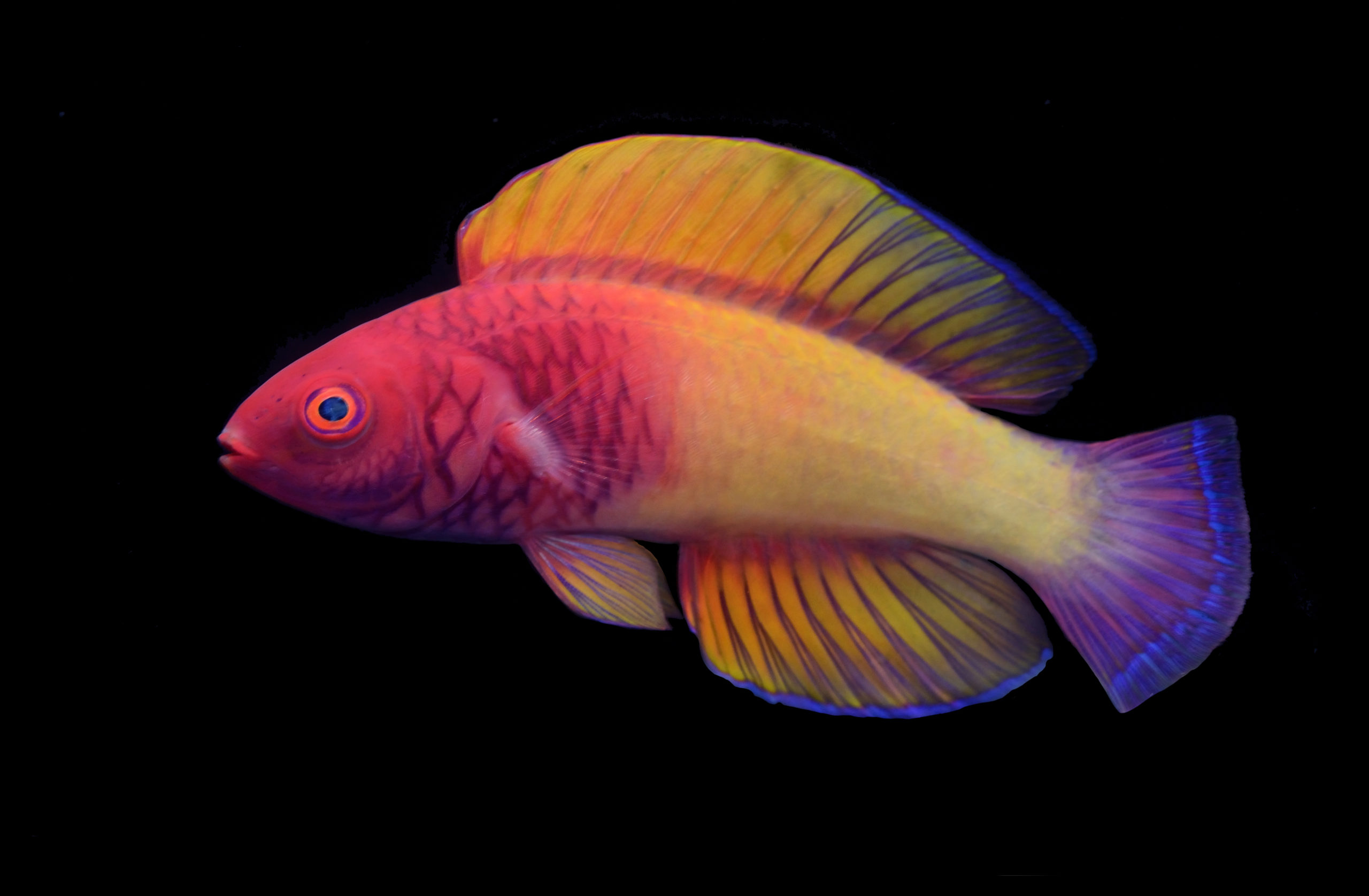- A colorful reef fish from the Maldives is the first new-to-science species to be described by a Maldivian scientist.
- Cirrhilabrus finifenmaa has been named by Ahmed Najeeb, a biologist from the Maldives Marine Research Institute (MMRI), after the local word for “rose.”
- Subtle physical differences and DNA analyses confirmed the rose-veiled fairy wrasse is a separate species from the already known rosy-scales fairy wrasse (Cirrhilabrus rubrisquamis).
- Researchers say the newly described fish is already being sold for the aquarium trade, calling it “unsettling when a fish is already being commercialized before it even has a scientific name.”
Out in the azure waters and colorful corals of the Maldives, a resplendent, rainbow-hued fish has become the first to be named and described by a Maldivian researcher.
New to science, the rose-veiled fairy wrasse (Cirrhilabrus finifenmaa) is named in the local Dhivehi language. Finifenmaa means “rose” and is a tribute to the islands’ pink-hued national flower as well as the color of the fish. A description of the species was published this week in the journal ZooKeys.
Listen to this article here:
“It has always been foreign scientists who have described species found in the Maldives without much involvement from local scientists, even those that are endemic to the Maldives,” Ahmed Najeeb the biologist from the Maldives Marine Research Institute (MMRI) who named the fish, said in a press release. “This time it is different and getting to be part of something for the first time has been really exciting, especially having the opportunity to work alongside top ichthyologists [fish biologists] on such an elegant and beautiful species.”



The new, rainbow-hued fish came to light when researchers more closely examined one widespread species of fish, Cirrhilabrus rubrisquamis, and found, upon closer look, two distinct species. The differences between the two species are subtle, such as the height of the spines and the numbers of scales on different body parts, but DNA analyses have confirmed the finding.
Now, the known range of both species is much smaller, important information to have when making plans for conservation. “This exemplifies why describing new species, and taxonomy in general, is important for conservation and biodiversity management,” said lead author and University of Sydney doctoral student Yi-Kai Tea.


The Maldives is a nation of small islands, situated about 800 kilometers (500 miles) south of India. The island chain boasts the seventh-largest coral reef system on the planet. Until early this year, the mesophotic zone of the Maldives’ reefs, lying some 30-150 meters (100-500 feet) below the ocean’s surface, hadn’t been explored by scientists. In January, an expedition down to 122 meters (100 to 500 feet) below sea level unveiled at least eight new-to-science species.
The expedition was part of the California Academy of Sciences’ Hope for Reefs initiative and included researchers from the MMRI, the University of Sydney and Chicago’s Field Museum.
“Nobody knows these waters better than the Maldivian people,” said Luiz Rocha, curator of ichthyology at the CAS and co-director the Hope for Reefs initiative. “Our research is stronger when it’s done in collaboration with local researchers and divers.”


The colorful and charismatic Cirrhilabrus fish are already traded as aquarium fish, including the rose-veiled fairy wrasse, Rocha said. Many marine fish that make their way to aquariums are raised or caught unethically in the wild says, according to Robert Woods, a fish enthusiast and owner of Fishkeeping World, in a 2019 commentary for Mongabay on how to ensure that you buy aquarium fish ethically.
“Though the species is quite abundant and therefore not currently at a high risk of overexploitation, it’s still unsettling when a fish is already being commercialized before it even has a scientific name,” Rocha said. “It speaks to how much biodiversity there is still left to be described from coral reef ecosystems.”
Citation:
Tea, Y., Najeeb, A., Rowlett, J., & Rocha, L. A. (2022) Cirrhilabrus finifenmaa (Teleostei, Labridae), a new species of fairy wrasse from the Maldives, with comments on the taxonomic identity of C. rubrisquamis and C. wakanda. ZooKeys, 1088, 65-80. doi:10.3897/zookeys.1088.78139
Banner image of Rose-Veiled Fairy Wrasse by Yi-Kai Tea ©
Liz Kimbrough is a staff writer for Mongabay. Find her on Twitter @lizkimbrough_
FEEDBACK: Use this form to send a message to the author of this post. If you want to post a public comment, you can do that at the bottom of the page.
